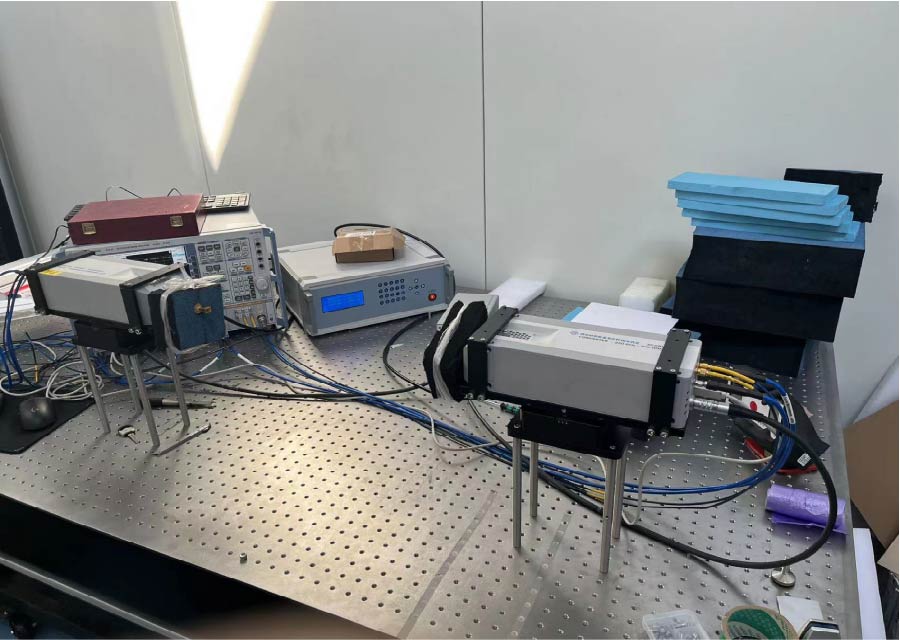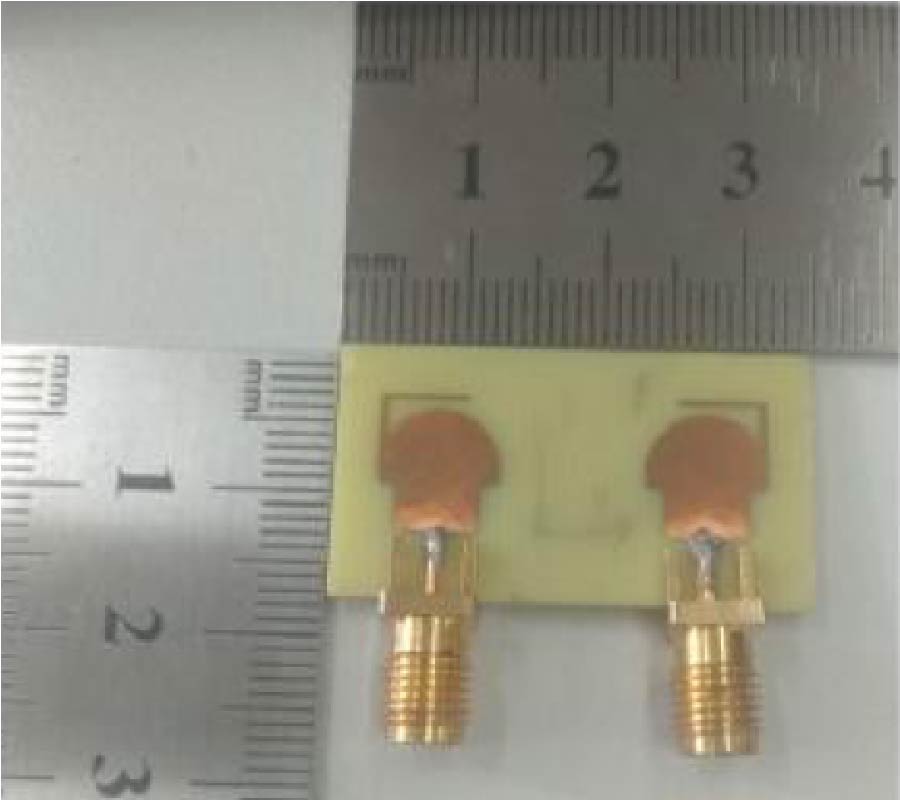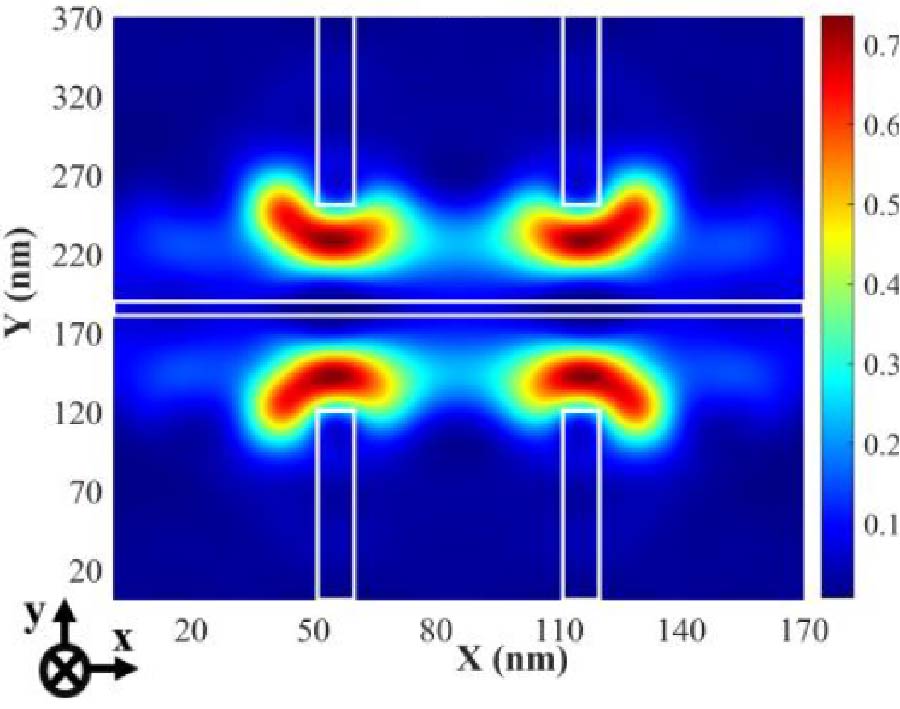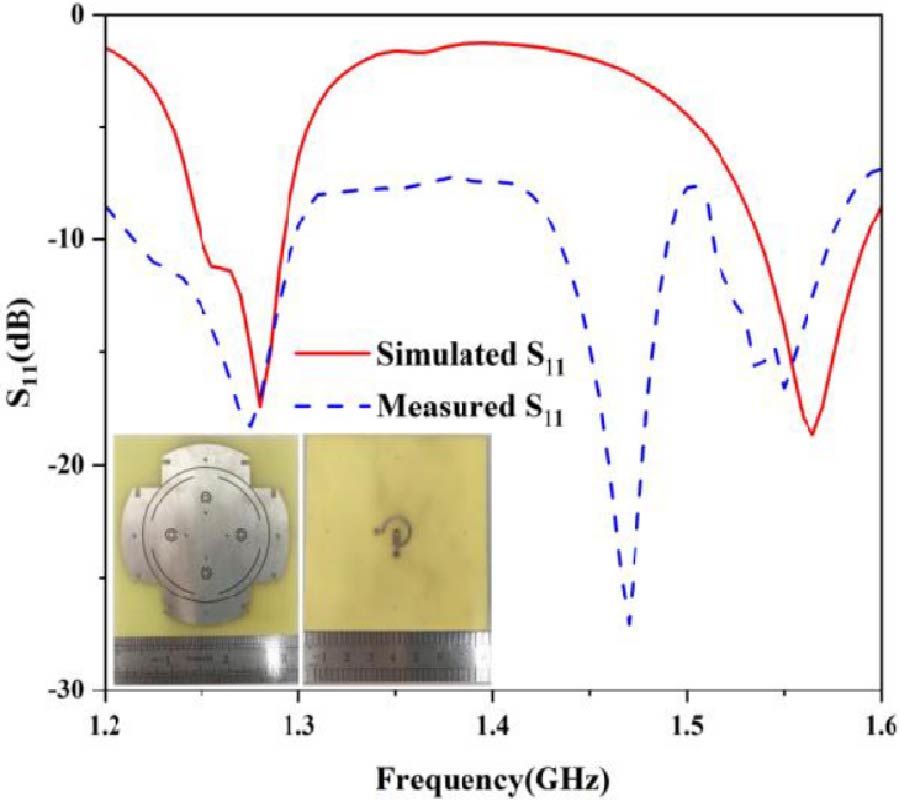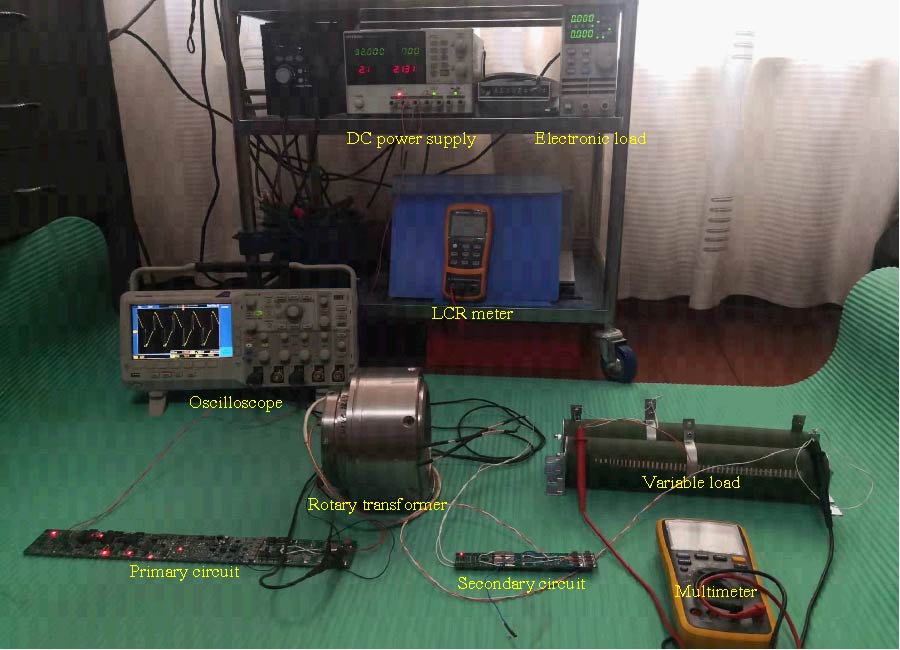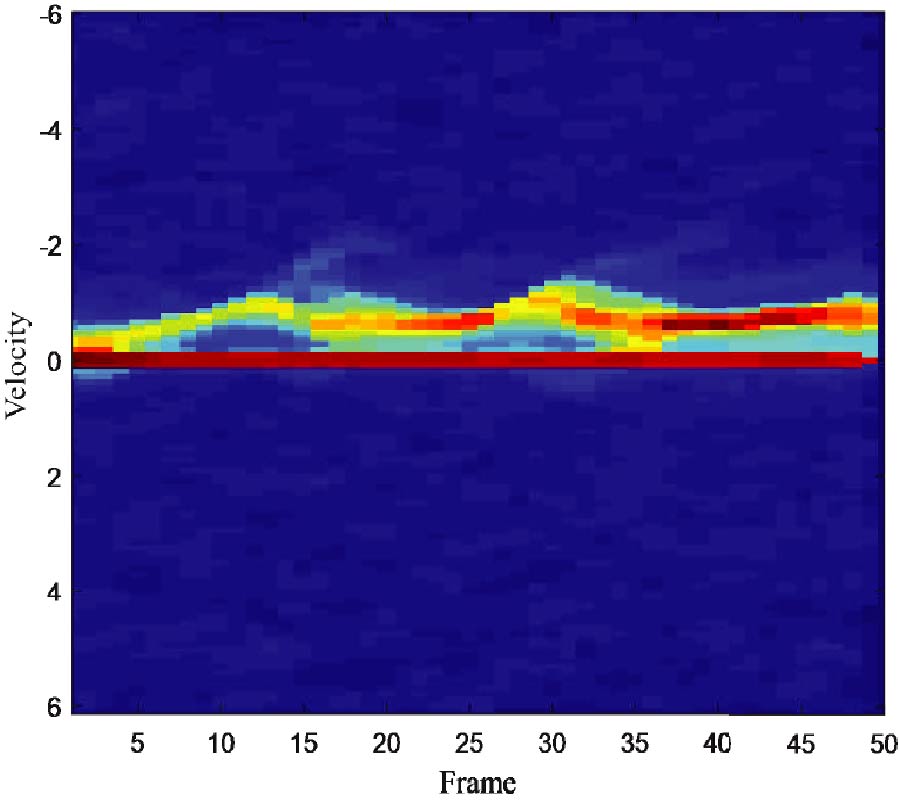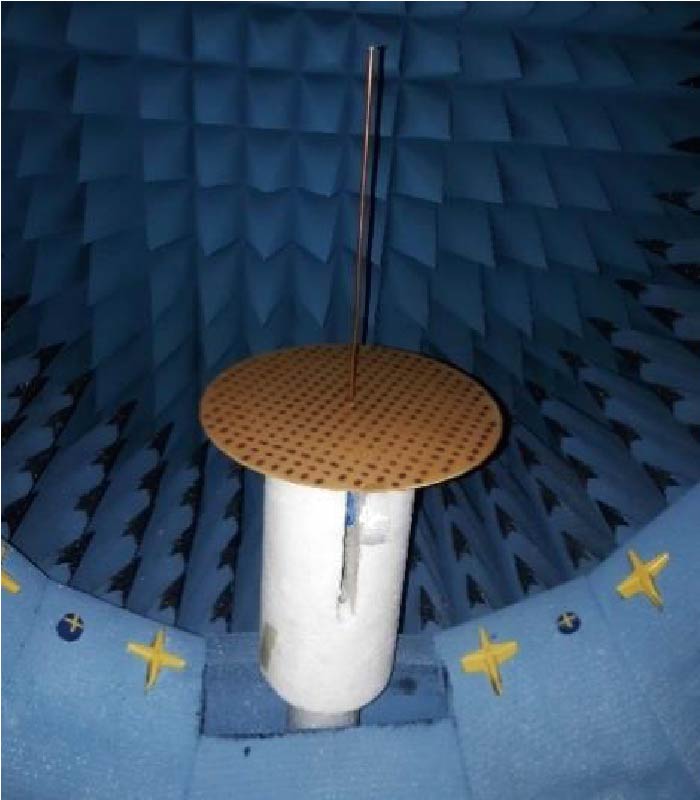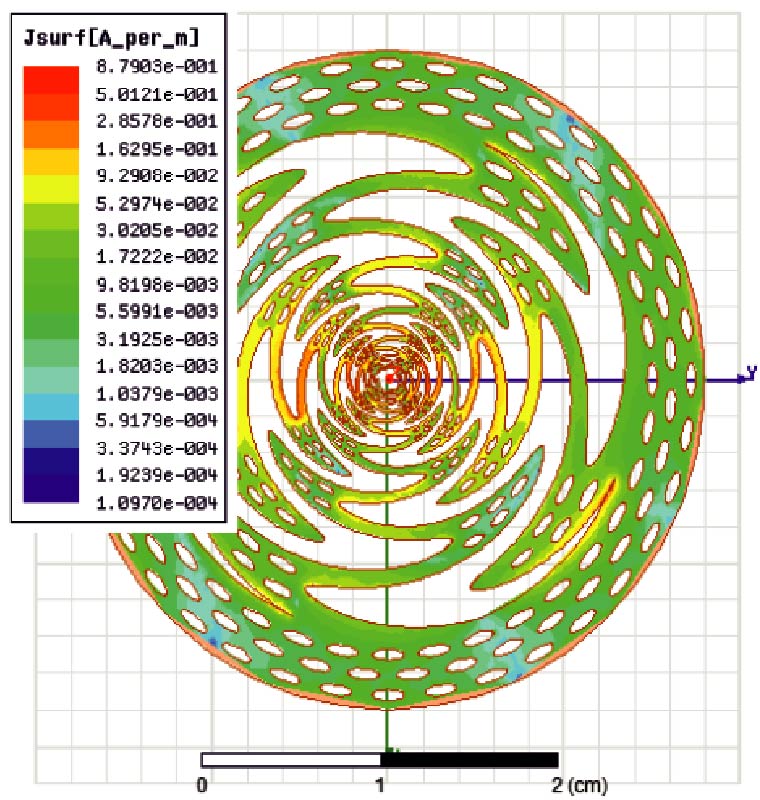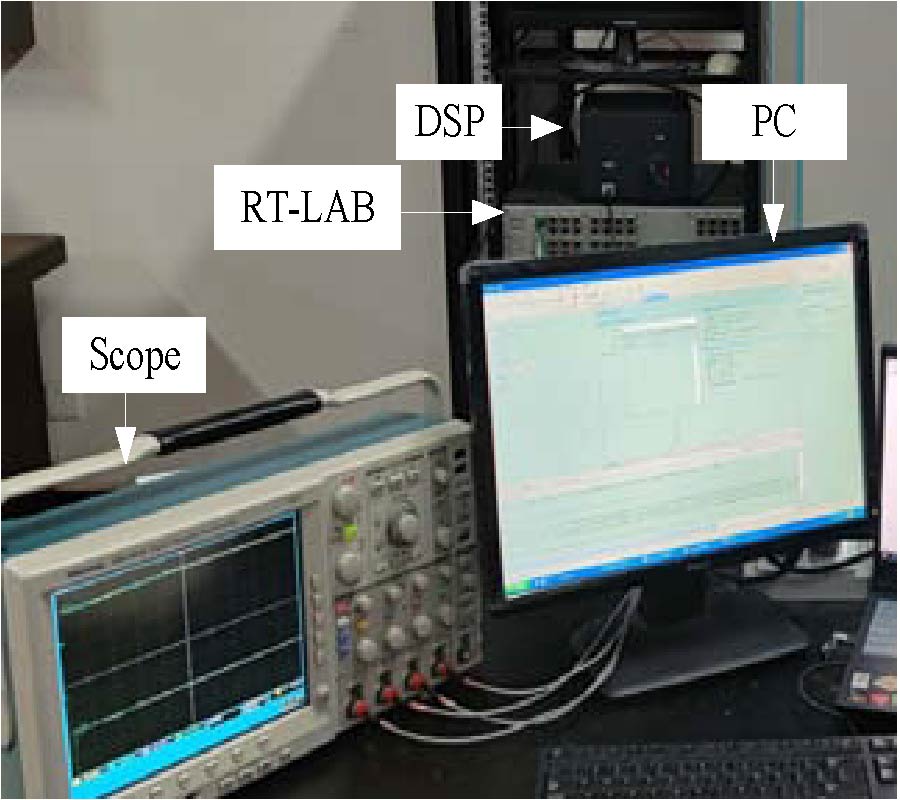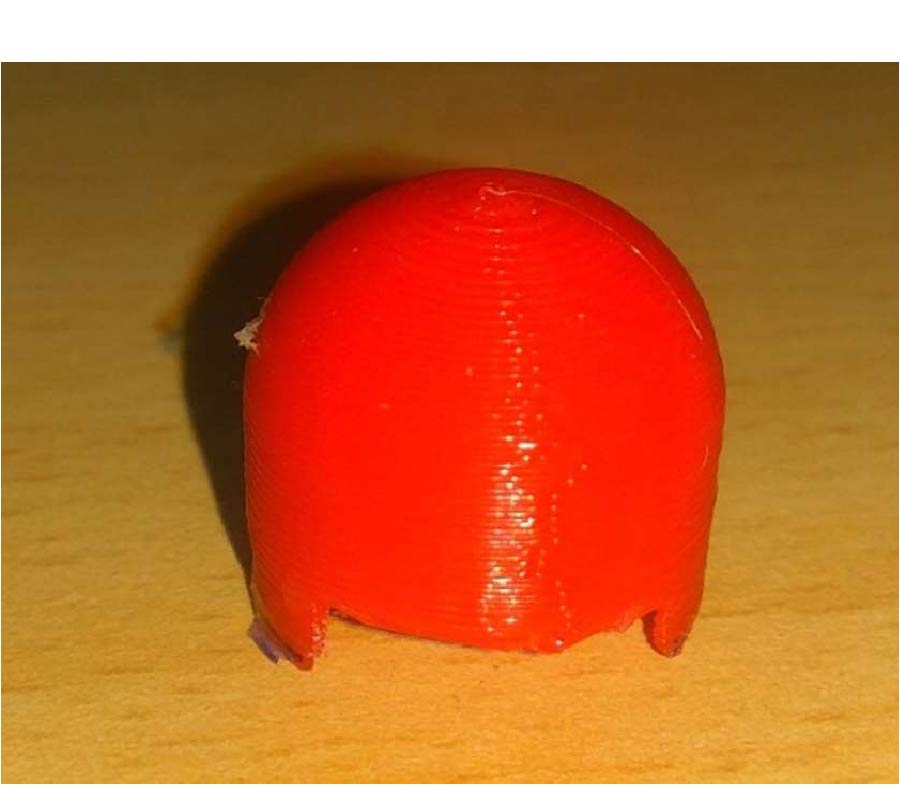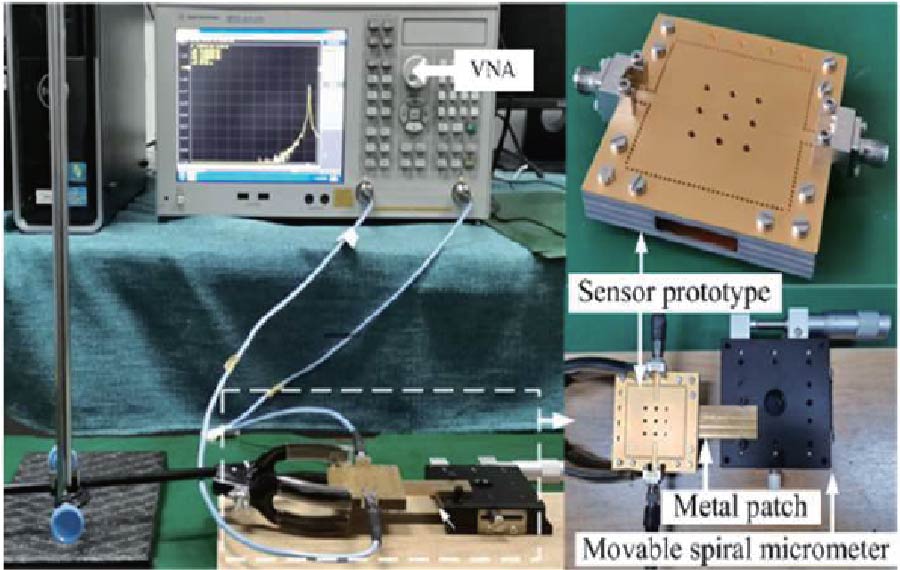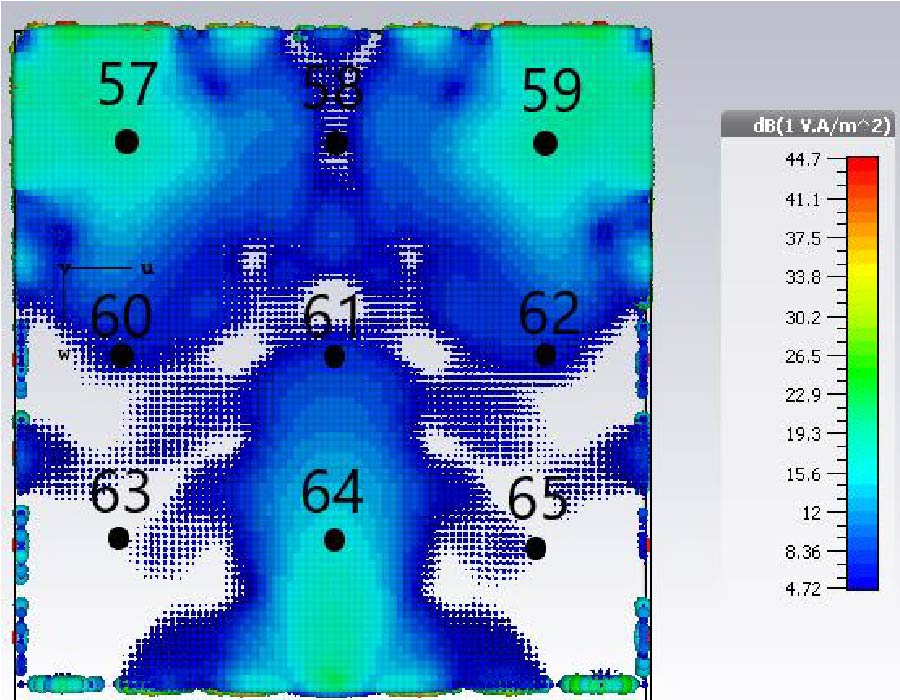A Tri-Band Miniaturized Antenna Using Fractal Defected Ground Structure for C/X and Ku-Band Applications
Kakani Suvarna
,
Nallagarla Ramamurthy
and
Dupakuntla Vishnu Vardhan
In this article, a miniaturized antenna with a Koch fractal defected ground structure (KFDGS) is proposed for C/X and Ku-band applications. The performance of an inset-fed lambda/2 patch antenna is examined using an iterated KFDGS etched on the ground plane. A conventional antenna operated at 16 GHz with a return loss of -34.31 dB is constructed, followed by a tri-band miniaturized antenna operating at 6.35, 9, and 13.05 GHz with a return loss of -22.41, -25.05, and -28.54 dB in order to achieve miniaturization of 60.31%, 43.75%, and 18.43% respectively. An antenna is designed on a Roger RT Duroid substrate, fabricated, and tested with dimensions of 12×14×0.8 mm3, and its impact on reduction in size performance has been evaluated with measured peak directivity and gain of 3.07 and 2.80 dBi at 6.35 GHz, 4.78 and 4.65 dBi at 9 GHz, and 7.73 and 7.76 dBi at 13.05 GHz, respectively. A good agreement is found between the measurements and simulations.




